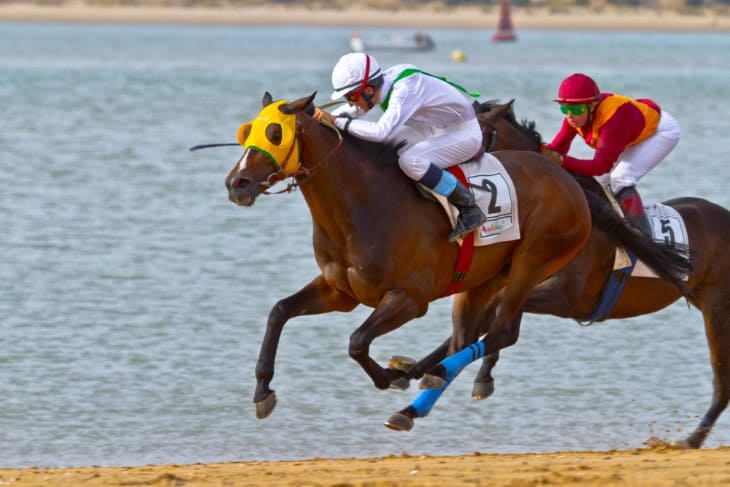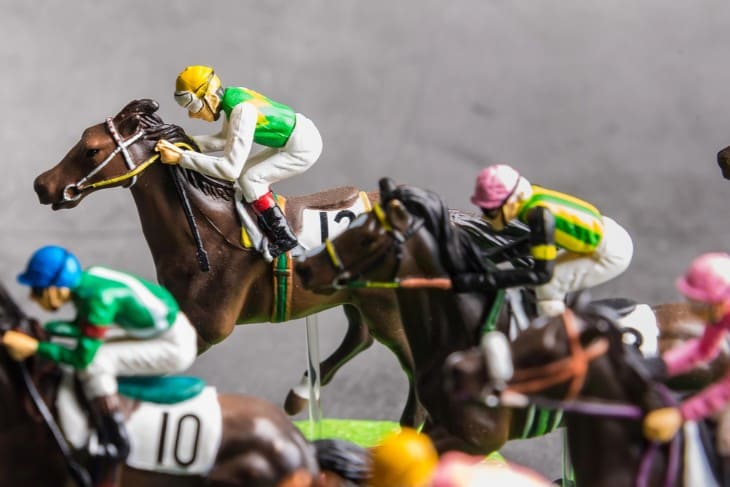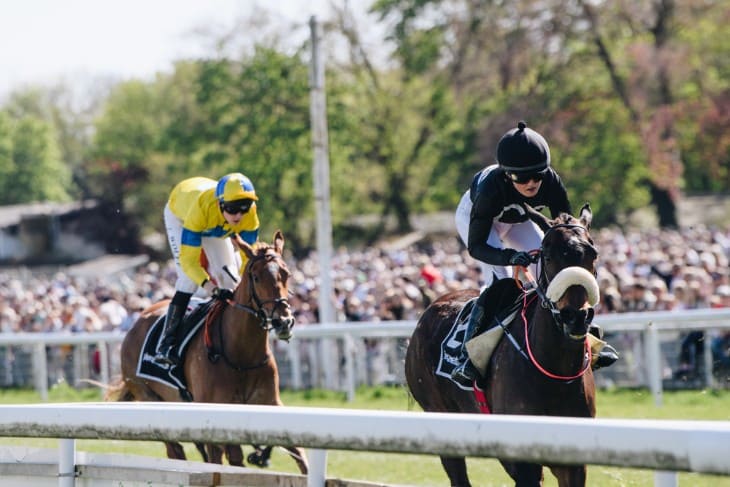- Crucial Characters in Grand National History
- Breeding's Impact on Winning
- Course Design and What It Causes
- Skills And Strategic Thinking Of Jockeys
- Public Betting Trends And Effect On The Sport
- International Competitors in the Grand National
- Preparing for the Grand National is more than a one-day effort.
- Conclusion
Crucial Characters in Grand National History
The Grand National has a long history, and it's been shaped by several critical characters, from iconic jockeys to influential trainers to legendary horses. Red Rum is said to be the most famous horse in the racetrack's history, with three wins in the 1970s, becoming a national treasure.
The fact that he conquered the gruelling 4½ mile course with its 30 fences speaks volumes about why this race is so challenging and embodies it at its best. However, his legacy goes beyond just winning; he played a massive part in putting this race on the map.
Alongside horses, jockeys and trainers have also built an essential reputation for themselves in the Grand National's story. George Stevens might not be as famous as Red Rum but he holds an impressive record of five victories from the 19th century, emphasising how much skill and experience are valued here.
More recently, trainers such as Willie Mullins and Gordon Elliott have dominated with multiple wins, showing how crucial strategy planning and preparation can be for this race. All these individuals have contributed to making Grand National what it is today.
Preparing Horses for Grand National
Getting horses ready to take on the Grand National is no joke; it involves combining modern science with traditional training methods. Race Strategy, Tactics, and stamina building are all considered at every stage during the training regime. Training regimes may vary yard-by-yard, but they all aim to get horses ready mentally and physically.
- Stamina Building: Long-distance gallops are done regularly to ensure cardiovascular fitness and endurance are off the charts.
- Jump Training: Regular sessions over fences similar to those found at Aintree help horses acclimatise to the unique demands of their courses.
- Recovery & Nutrition: Tailored diets along with physiotherapy exercises help maintain optimal performance capability while keeping nutrition levels high.
This kind of preparation is necessary not only to win the race but also for the safety and health of horses. Improvements in veterinary medicine and overall technology have made it easy for trainers to monitor their horses' performance capability while preparing for the race.
Breeding's Impact on Winning
Breeding plays a crucial role in winning such a demanding race as this. It has become a sophisticated aspect of the sport, with breeders aiming to combine speed, stamina, and jumping ability. All of these are traits that are crucial in winning a steeplechase like The Grand National. Breeding a Grand National winner involves carefully selecting sire & dam lines to produce offspring with both physical and mental attributes that excel in long-distance jump racing.
Race Strategy and Tactics is not limited to the actual race. Owners and trainers are very selective when it comes to breeding their horses too. The perfect Grand National horse possesses inheritable traits and can be trained for its rigorous course, all while performing at its highest level under unique pressures of the race.
Successful breeding strategies have created horses ideally suited for a Grand National, which has only grown the sport. Breeders want to ensure that they're making better competition and improving the treatment of the involved horses for every generation.

Course Design and What It Causes
The Aintree course is a challenging mix of high, sharp turns and formidable obstacles and does wonders for any horse and rider's agility, stamina, and courage. The design guarantees that only the best will win. It would help if you were exceptionally well-prepared to navigate it correctly.
Every section of the course demands different skills from the jockey and the horse, from jumping big fences to finishing strong on a straightaway. This variety in demand makes it one of the hardest steeplechases in all racing.
As time passed, their goal was to make it safer for horses and jockeys while keeping its historic difficulty level. They had no intention of diluting its challenge factor, so they implemented changes instead to reduce risk. These modifications require trainers and jockeys to adapt their strategies each year in accordance with how the course has evolved. The balance between safety and challenge will always be at the forefront when looking to improve it.
Skills And Strategic Thinking Of Jockeys
Jockeys are far more than just riders. They're strategic thinkers and skilled athletes who rely on Race Strategy And Tactics more than anything else when winning races like this one. What they choose to do during those few split seconds can secure their victory or guarantee their defeat.
- Pacing: Managing your horse's energy throughout is everything, particularly if you want them to finish strong.
- Positioning: At critical fences, there's a good chance your horse will suffer damage or get halted entirely due to other riders not making successful jumps. If you position yourself in an area away from most people, you should be okay.
- Communication: You and your horse need to have a complete understanding if you're going into this race expecting success.
Being adaptable is something every jockey needs everywhere, but since every Grand National race varies, adaptability is on an entirely new level. You must be mindful of the dynamics and your horse's condition to survive. The relationship between horse and jockey is strong, with trust and understanding crucial for success in this race. The jockey's skill, in harmony with the preparedness of the horse, epitomizes the essence of the race, blending strategy, bravery, and athletic excellence.
Public Betting Trends And Effect On The Sport
If you've been around long enough, then you know that public betting trends have a significant effect on horse racing and the spectacle surrounding it. High-profile races such as the Grand National bring in loads of money from bets, but it also excites everyone there. It also affects how people see horses and their riders. Betting odds can reflect people's thoughts about specific players, affecting Race Strategy And Tactics overall. Trainers and jockeys constantly change their approach depending on what kind of pressure they feel from both sides, whether favorites or underdogs.
Millions of dollars are bet on the Grand National every year. Yes! Millions! No wonder some people take a keen interest in the race with that much money floating around. Plus, not just the sport benefits from this cash influx. The stakes also contribute to its global allure and overall economic health, with online bets accessible by everyone and anyone, read no matter where you live.
Can you imagine how many more viewers the race gets now? And to think, all those new eyeballs can cast their penny too if they want to! Technology is rapidly changing things for public betting, and it would be foolish not to change along with it.

International Competitors in the Grand National
Grand National has gone international. From the horses to the trainers, this race now draws in talent from all over the world. It's interesting to watch how they race against each other, considering their different approaches to training and race day strategies. But that's what makes it an exciting contest.
- Training Techniques: Trainers from across the globe have different methods of training horses, which make for a diverse pool of competitors.
- Racing Styles: Jockeys outside the UK may race differently, which can change the pace and create new dynamics within the competition.
- International Success Stories: Victories by jockeys on international horses prove that Grand National is a global event.
The inclusion of international competitors has not just improved the profile of Grand National—it has also bred a global camaraderie among riders and trainers in horse racing. The exchange of ideas and techniques enhances horse racing, advancing our beloved sport with every gallop onward.
Preparing for the Grand National is more than a one-day effort.
Any jockey will tell you that preparation for any race takes months. But Grand National requires year-round maintenance in every aspect of your horse's life. Race Strategy and Tactics are used as cornerstones for everything else on this list; daily routines are built around these long-term plans to ensure that your horse is ready for Aintree Day, both mentally and physically.
- Fitness Training: Yes, we're talking about Rocky-style training montages here. A tailored workout regimen ensures peak physical health in your horse so they can perform at their best during the big run.
- Mental Preparation: You need to introduce your horse to all sorts of foreign environments and simulated race conditions so it knows how to stay focused when it matters most (and stay calm when it doesn't).
- Health and Nutrition: We think human athletes go through rigorous care routines, but let us tell you, nothing compares to what jockeys put their horses through in this regard.
A team of trainers, jockeys, veterinarians, and support staff is necessary to ensure your horse is ready for the Grand National. They each have individual expertise that will work together to shape your champion.
Conclusion
The Grand National is a study of what makes horse racing so captivating. Combining tradition with excitement and an unpredictable nature that can’t be replicated, it’s hard not to watch this race. The Race Strategy and Tactics used by each team are just as layered as the race itself. From breeding to early training, right up until the big day at Aintree, every detail is considered for the sake of victory.







